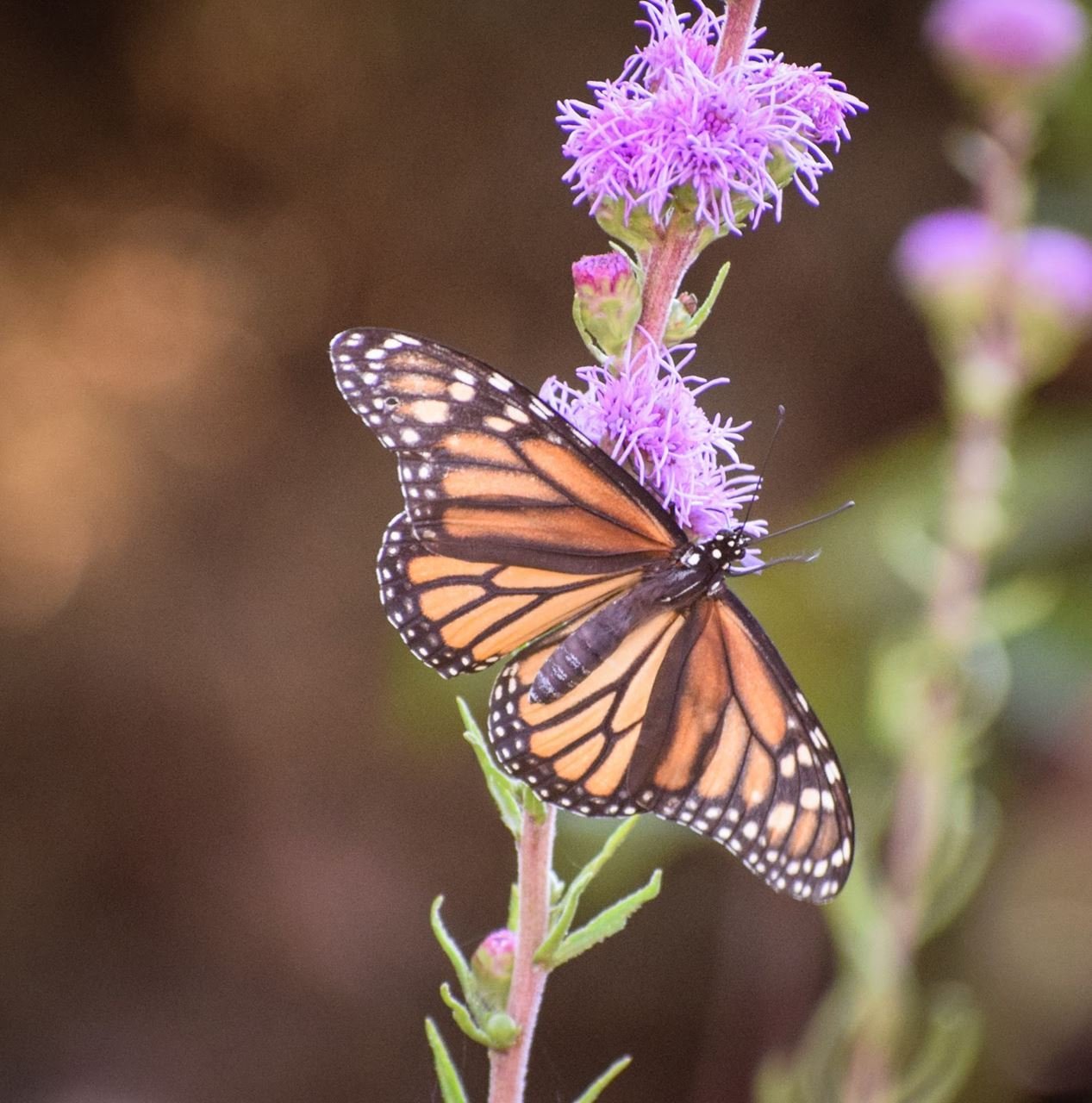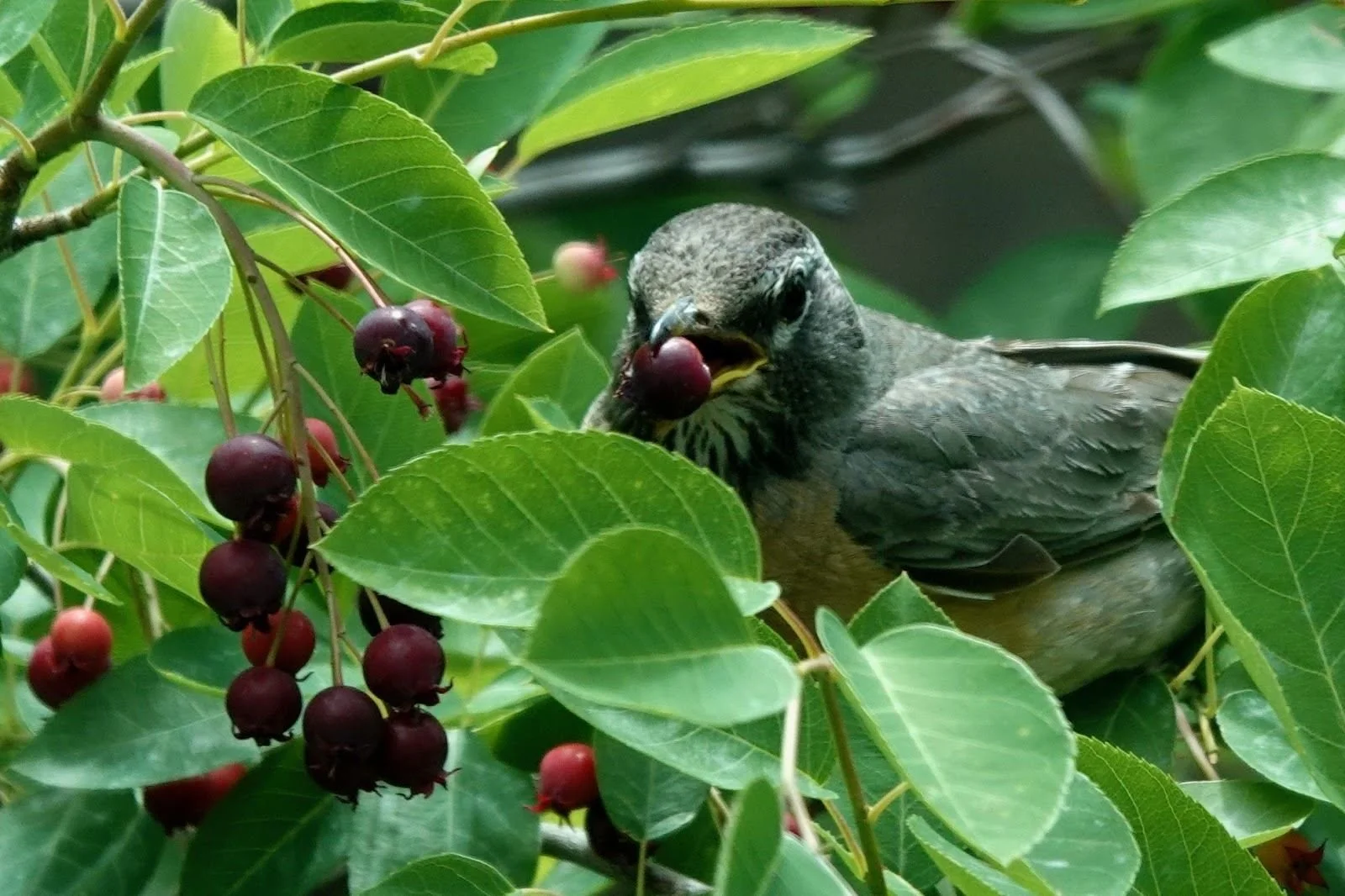Bird-Friendly Backyards: Dondi Black
It’s National Pollinator Week (June 22-28)! This is a great time to appreciate all the important benefits our pollinators provide and reflect on what we can do to help protect them. As bird enthusiasts, we should be concerned about pollinators and how our actions impact them as they are critical in supporting habitat for bird populations. There are lots of things you can do to help pollinators and birds (which you can learn about here) but one of the most impactful things you can do is integrate native plants into your yard.
There are many benefits of native habitat landscaping, including increased food and shelter for wildlife, less water and pesticide use for homeowners, and the pleasing aesthetic of having nature right out your backdoor. Golden Eagle Audubon Society (GEAS) recently asked some of our members to share their bird-friendly backyards with us so you can learn more about what native habitat can look like at home.
The three yards are pretty different from each other and will give you a sense of the variety of options you have if you decide to incorporate native plants into your outdoor space. We hope these photos and stories provide you with inspiration and ideas on what you can do in your yards, patios, and communities spaces. Whether you turn your entire backyard into bird habitat or plant just a few natives by your front door, any step you take will be impactful for our native birds!
Interview with Dondi Black, GEAS Vice-President
What inspired you to incorporate native habitat into your yard?
Native plants are better adapted to our environment so typically require less care and maintenance than popular nonnative plants that prefer different soils and climate conditions. Easier maintenance was a huge perk for us! Reading Doug Tallamy’s Bringing Nature Home as well as Noah’s Garden by Sara Stein during Snowmageddon really hit home the importance of native plants and especially native insects. We had created a certified wildlife habitat about ten years earlier in a previous yard and while it included many native plants, the emphasis was more on drought-tolerant and xeric plants. This time we would focus on attracting as many insects as possible with native plants.
Tell us a little bit about the background of your backyard habitat.
It wasn’t our intention to recreate the yard. We were busy with other things but needed to replace an old and failing retaining wall - 100 feet long and 10 feet high. In the process of doing that, all of the surrounding habitat was destroyed and removed. Due to unforeseen circumstances, “snowmageddon” hit before the project was completed. We spent the winter with a barren landscape full of snow, ice and mud. It was a long stressful winter for all. I provided a lot of food and water but had no shelter for the birds. The birds brought me joy during those never-ending winter days and it was during that time that I became committed to creating an oasis for the local birds, bees and butterflies. Or at least doing what I could with our little piece of land.
Once spring finally arrived and the construction crews and equipment were out of the yard, nurseries were starting to open and I began collecting plants. We spent most of our free time breaking up compacted soil, planting, and laying drip lines. We have several species of penstemons and buckwheats, the superstars of desert landscapes and popular with bees, butterflies and hummingbirds. Other favorites include serviceberries, milkweeds, purple desert sage, sumacs, globemallows, rabbit brush, wild rose, gambel oak .. too many to list, I love them all!
What has been the most challenging aspect of having native plant species in your yard?
It is challenging to know which plants will do well and where without just trying it. I believe it is best to go about it as an ongoing experiment - try it and see what works. Some plants will thrive and spread while others will struggle and disappear. Everyone’s yard, light, water, soil situation is unique. And every year might be different.
What is your favorite part of having native habitat in your yard?
I love seeing wildlife benefit from the habitat we created - lizards, snakes, birds, butterflies, bumblebees, etc. Especially after removing all of our habitat, it makes me happy to see wildlife returning and I was impressed by how quickly it happened! It really does make a difference right away.
What would you tell someone who is considering incorporating more native plants in their outdoor space?
Be patient and flexible. If something doesn’t go as planned, do something else. Check out the native plants at the Idaho Botanical Garden for inspiration and ideas and for knowledge about shape and size and growing conditions as well as what they look like throughout the year. Creating habitat is a long-term project. A lot can be accomplished right away - planting annual sunflowers in the spring will attract bees and birds in the summer. Creating dense cover for nesting and shelter takes more time. Most available native plants are tiny at first and will take time to grow extensive root systems - which is a good thing!
When considering plants, I look up their natural growing conditions - where they are native and what insects/birds use them. Not all native plants are created equal, some seem to be more beneficial to wildlife than others. I read most Xerces Society publications including ‘100 Plants to Feed the Bees’ which I found very helpful. It includes native range maps and growing conditions. It doesn’t mention birds specifically, but finches do enjoy the seeds and hummingbirds appreciate the nectar. Shop native plant sales in the spring!



